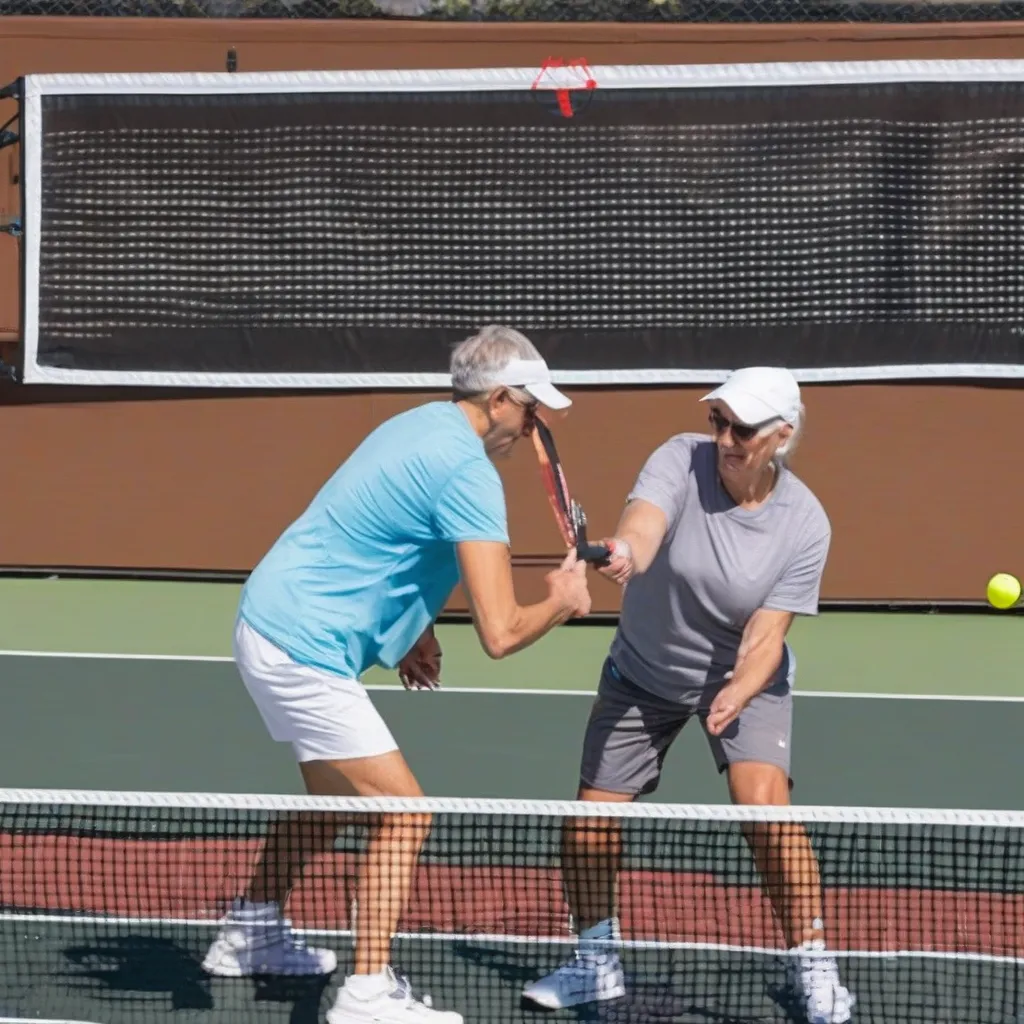Table of Contents
Pickleball Dink Drills: Introduction to Enhancing Control and Precision
Dinking is a critical skill in pickleball that allows players to control the pace of the game and set up winning shots. Mastering pickleball dink drills can significantly improve your control, precision, and overall performance on the court. This guide covers the top 10 dink drills to help you refine your skills and dominate your opponents.
Why Dink Drills are Important in Pickleball
Incorporating dink drills into your practice routine offers several benefits:
- Control: Dink drills improve your ability to control the ball and place it precisely where you want it.
- Consistency: Regular practice helps you develop consistency in your dinks, reducing unforced errors.
- Patience: Dinking requires patience and strategic thinking, which are essential for successful play.
- Setup Shots: Effective dinks can set up opportunities for offensive shots and put pressure on your opponents.
 Pickleball Dink Drills
Pickleball Dink Drills
Top 10 Pickleball Dink Drills
1. Cross-Court Dinks
Practice hitting dinks diagonally across the court. This drill helps improve your accuracy and control while making it difficult for your opponent to return the ball.
2. Straight-On Dinks
Stand opposite your partner and practice hitting straight-on dinks back and forth. Focus on maintaining a low trajectory and consistent placement.
3. Dink Volleys
Practice volleying dinks without letting the ball bounce. This drill improves your reflexes and control when dealing with fast-paced exchanges at the net.
4. Target Practice
Set up targets on the court and aim your dinks at them. This drill enhances your precision and helps you learn to place the ball accurately in different areas of the court.
5. Moving Dinks
Incorporate movement into your dinking practice by shuffling side to side as you hit dinks. This drill improves your footwork and ability to dink on the move.
6. Soft Dinks
Focus on hitting very soft dinks that barely clear the net. This drill helps you develop a delicate touch and control over the ball.
7. Deep Dinks
Practice hitting dinks that land deeper in the kitchen. This variation keeps your opponents guessing and prevents them from crowding the net.
8. Angle Dinks
Work on hitting angled dinks that force your opponent to move laterally. This drill improves your ability to create difficult angles and disrupt your opponent’s positioning.
9. Random Dinks
Mix up your dinks by hitting them randomly to different parts of the kitchen. This drill helps you become unpredictable and keeps your opponent off balance.
10. Partner Dink Challenge
Challenge your partner to a dink-only game. The goal is to maintain a rally using only dinks, which helps build consistency and control under pressure.
Techniques for Effective Dinking
Implementing the right techniques is crucial for mastering pickleball dink drills:
1. Maintain a Soft Grip
Hold your paddle with a soft grip to improve your control and touch. A soft grip allows for better finesse when hitting delicate dinks.
2. Use a Low Stance
Stay in a low stance with your knees bent to maintain balance and react quickly. A low stance helps you get under the ball and hit more effective dinks.
3. Focus on Placement
Concentrate on placing the ball accurately rather than hitting it hard. Precise placement is key to successful dinking and setting up offensive shots.
4. Be Patient
Patience is crucial when dinking. Wait for the right opportunity to attack and avoid making aggressive shots that could result in errors.
5. Practice Regularly
Consistent practice is essential for mastering dinks. Incorporate dink drills into your regular practice routine to build muscle memory and improve your skills.
Common Mistakes to Avoid in Dinking
Avoid these common mistakes to improve your pickleball dinking game:
1. Hitting Too Hard
Avoid hitting dinks too hard. Focus on soft, controlled shots that land accurately in the kitchen.
2. Standing Too Upright
Maintain a low stance to improve your balance and reaction time. Standing too upright can make it difficult to get under the ball and hit effective dinks.
3. Lack of Consistency
Practice regularly to build consistency. Inconsistent dinks can lead to unforced errors and missed opportunities.
4. Poor Footwork
Good footwork is essential for effective dinking. Practice moving quickly and efficiently to get into the right position for each dink.
5. Being Impatient
Be patient and wait for the right moment to attack. Rushing your shots can lead to mistakes and lost points.
Resources for Further Learning
For more detailed information on pickleball dink drills and improving your game, explore these valuable resources:
- Visit the USA Pickleball Association (USAPA) for comprehensive guides and official rules.
- Explore instructional videos and articles on Pickleball Central.
- Check out detailed reviews and tutorials on Pickleball Portal.
- Learn from top players and coaches on PickleballMAX.
Conclusion
Mastering pickleball dink drills is essential for improving your control, precision, and overall performance on the court. By practicing the top 10 drills outlined in this guide and avoiding common mistakes, you can enhance your dinking skills and become a more effective player. Use these strategies to dominate the kitchen and elevate your pickleball game.
Frequently Asked Questions
- Why are dink drills important in pickleball? Dink drills are important because they improve your control, consistency, patience, and ability to set up offensive shots.
- What are the best techniques for dinking? Effective techniques include maintaining a soft grip, using a low stance, focusing on placement, being patient, and practicing regularly.
- How can I practice my dinking skills? Practice dinking drills with a partner, use target practice, incorporate movement into your drills, and challenge yourself with dink-only games.
- What are common mistakes to avoid in dinking? Common mistakes include hitting too hard, standing too upright, lack of consistency, poor footwork, and being impatient.
- Where can I find more information on pickleball dink drills? Explore detailed guides and tutorials on websites like USA Pickleball Association, Pickleball Central, Pickleball Portal, and PickleballMAX for comprehensive information on improving your dink drills.